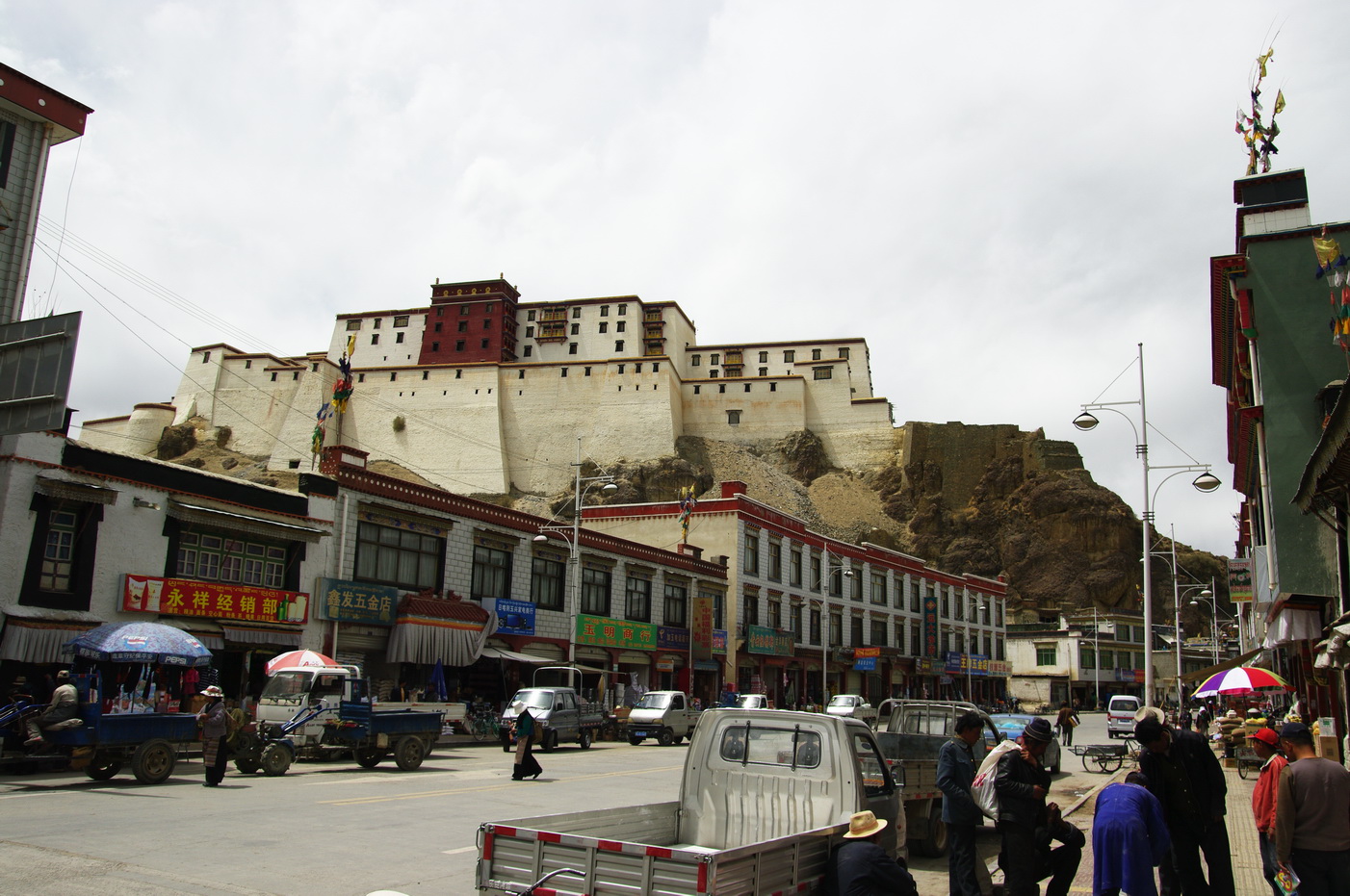Shigatse, the second-largest city in Tibet, is known as the traditional seat of the Panchen Lama, making it a place of significant religious and cultural importance. Geographically, it is situated at the confluence of the Yarlung Tsangpo and Nyang rivers, approximately 250 kilometers west of Lhasa. The city is nestled at an average altitude of 3,840 meters, characterized by a cold semi-arid climate with chilly, dry winters and mild, wet summers.
Historically, Shigatse has been a central hub in Tibetan life, traditionally serving as the political, cultural, and economic heart of the Tsang region. Tashilhunpo Monastery, founded in 1447 by the first Dalai Lama, is one of the most important religious monasteries in Tibet, acting as the historical residence of the Panchen Lamas. The monastery attracts pilgrims and tourists alike, offering insights into Tibetan Buddhism with its golden-roofed buildings and statuary of the Maitreya Buddha.
Besides Tashilhunpo, notable landmarks include Shigatse Dzong, a grand fortress reminiscent of Lhasa's Potala Palace, which has been a symbol of the city's historic military significance. The ruins speak volumes of the majestic past, providing a panoramic view of the city and its surroundings.
Shigatse is also known for its annual festivals such as the Tashilhunpo Thangka Festival, where the Thangka, a large religious painting, is unfurled to public view, drawing visitors from far and wide. The city is also home to the Gyantse Dama Festival, highlighting the regional cultural vibrancy through traditional horse races and archery.
An interesting fact about Shigatse is its proximity to Mount Everest, known locally as Qomolangma. It serves as a gateway for expeditions, making it a strategic location for trekkers and adventurers.
 Bgabel , CC BY-SA 3.0, via Wikimedia Commons
Bgabel , CC BY-SA 3.0, via Wikimedia CommonsChinaAsia
Nearby Places
Punakha Dzong(210 km)
Most beautiful monastery fortress in Bhutan, pivotal in the nation's history and home to sacred relics.Thimphu(214 km)
Capital with traditional architectureGangtok(216 km)
Sikkim capital with monastery views.Potala Palace(221 km)
Former residence of the Dalai Lama in Lhasa, an architectural icon and UNESCO World Heritage Site embodying Tibetan culture.Mount Everest Base Camp(243 km)
Starting point for Himalayan treks with views of world's highest peak.Trongsa Dzong(253 km)
Largest dzong fortress in BhutanUra Valley(265 km)
Traditional villages and temples amidst serene landscapes and cultural festivities in Bhutan.Log in to write a review.
Sustainable Travel Tips
Plan Mindfully
- Choose direct flights when possible
- Travel during off-peak seasons
- Pack light and bring reusables
- Prefer eco-friendly accommodations
At Your Destination
- Use public transport or walk
- Support local businesses
- Respect wildlife and habitats
- Choose activities with minimal impact
Daily Habits
- Reuse hotel towels
- Take shorter showers
- Turn off lights/AC when out
- Carry a reusable water bottle
